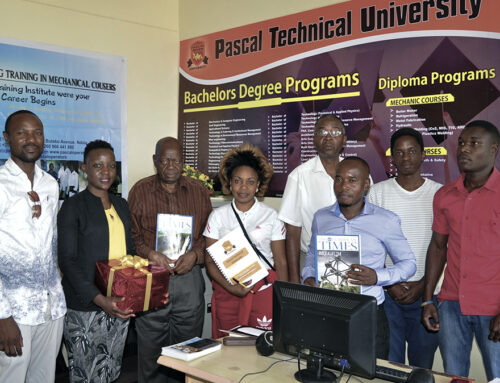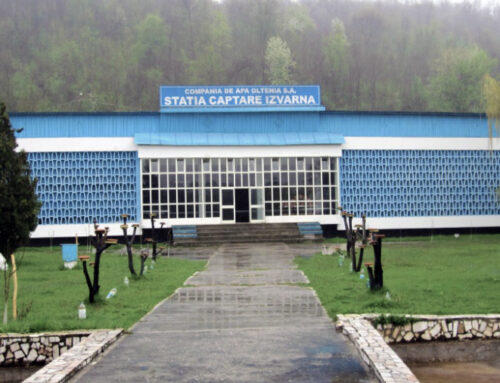
INCAS – National Institute for Aerospace Research “Elie Carafoli” is Romania’s leading research establishment in aerospace sciences. Originally part of the Applied Mechanics Institute of the Romanian Academy, founded in 1950 as the country’s first research institute for fluid mechanics and aeronautics, INCAS was established as the leading entity for research and development in aviation and aerospace sciences in 1991. It was named after the renowned Romanian scientist and engineer Elie Carafoli, an outstanding personality in the aerospace international community.
Promoting state-of-the-art technologies and innovative research, the scientists and engineers at INCAS have made important contributions to aerospace science and technology at international level. In fact INCAS has grown to become one of Europe’s largest and most innovative research establishments, operating a unique infrastructure dedicated to fluid mechanics, applied aerodynamics and flight physics.
INCAS has been involved in EU aerospace programmes starting 2005 and has made important contributions to EU policy in the aerospace area. INCAS is a full member of EREA – Association of European Research Establishments in Aeronautics and an active participant in ACARE – Advisory Council for Aviation Research in Europe, with major contribution to the FlightPath 2050 programmatic document. INCAS also participates in ESA projects, mainly the launchers and space vehicles technology areas and FLPP – Future Launchers Preparatory Programme.
The institute is a major partner in some of the most important on-going projects in FP7 and H2020 framework, as it is the case for JTI CleanSky2, the leading public-private partnership dedicated to the aviation sector, or the EREA led Future Sky Program. Looking to the future, INCAS is committed towards excellence in research, making long-term investments in innovative technologies and human resources in order to continue to play a major role in European and global aerospace research community towards 2050 and beyond.
Investing in tomorrow’s air-transport systems

The vision for the air transport system of the future is a priority for INCAS. Around one million people are in the air every minute on flights all over the world, and this total is set to grow exponentially over the coming decade. This increase in air traffic can result in significant changes to environment, as it is the case for the ozone layer in the upper troposphere and lower stratosphere. Other potential effects include changes in radiation levels, such as increased levels of harmful solar ultraviolet (UV-B) radiation, as well as changes in air quality and increased consumption of planetary resources.
INCAS believes that coping with these challenges requires a visionary integrated approach to air transport. Tomorrow’s air-transport systems must be environmentally sustainable, cost-efficient and safe, while providing more seamless mobility for citizens and still supporting economic growth.
To reach these goals, INCAS is investing in the Experimental Base for Environmental Atmospheric Research (BECA) and the Virtual Reality Laboratory for Aerospace Systems Design, the first of its kind in Central and Eastern Europe. Through these projects, INCAS will develop world-class competencies in Integrated Conceptual Design as well as modelling and simulation tools in aerospace sciences, advanced on‐ground and in‐flight experimental facilities, virtual-simulation environments with augmented reality, and new materials and structures with aerospace applications. INCAS aims to position itself as a pole of excellence in these cutting-edge technology areas and to enhance its attractiveness as a partner in European and international research efforts.
BECA: Research on aviation atmospheric impact

At BECA, INCAS will develop innovative solutions for advancing scientific understanding of the impact of aviation on the Earth’s atmosphere. This increased knowledge will support the development of new aircraft and propulsion technologies which will reduce harmful effects. In addition, air-traffic operations can be made more efficient through the introduction of new technologies and procedures, and more effective regulatory and economic measures can be introduced to help reduce harmful emissions.
Thanks to its prestigious track record, INCAS is well placed to develop these new capacities in Romania and to integrate its activities with other European and international R&D efforts. INCAS will have the technological capacity to participate in global environmental aerospace research initiatives, such as the Aerosols, Clouds, and Trace Gases Research Infrastructure Network (ACTRIS), the Integrated Carbon Observation System (ICOS) and the In-Service Aircraft for a Global Observing System–European Research Infrastructure (IAGOS-ERI) programmes.
BECA, located in Strejnic (Prahova County), integrates two airborne laboratories (ATMOSLAB and BN2) and a newly developed ground base. The centre includes a laboratory for calibration, monitoring air quality and pollution, atmosphere and land simulation, and remote sensing. It also includes a Centre for Command and Navigation and LIDAR (remote-sensing) technologies. The research carried out at BECA will have applications in many fields, including spectroscopy and multi-spectral imaging, assessment of air pollution in cities, geodesy, photogrammetry, topography, architecture and territorial planning, urbanism, agriculture, forestry, telecommunication networks, CO2 reduction, warning systems in case of forest fires, animal-tracking systems, and search-and-rescue operations.
BECA also promotes technology transfer at international level, especially regarding the European Space Agency’s Earth observation programmes. Another top priority on BECA’s agenda is to train scientists and engineers in the numerous disciplines associated with environmental atmospheric research.
Next-generation interfaces for aerospace engineering

INCAS is also involved in the emerging field of immersive virtual reality with aerospace applications. The new INCAS Virtual Reality Laboratory System (AERO-VR) is ranked one of the most advanced in the world and the only one in Central and Eastern Europe with the capacity to achieve 4K immersive visualisation projection. AERO-VR is focused on advanced research for a new generation of aircraft and spacecraft, and INCAS serves as a leading provider of design capabilities and advanced simulation over the entire scale of Technological Readiness Levels (TRL) from 1 to 9.
AERO-VR introduce the latest ICT technologies in a next-generation immersive virtual-reality research environment which allows for complementary and alternative simulation and testing to the more conventional technologies (e.g. wind tunnel, structural/crash testing, etc.). Interaction between simulator operators and the virtualisation target enables connections with the CAD interface so that changes can be exported on the processed model.
In addition, the target shape can be changed during the simulation and effects can be studied in real time.
But above all, the strategic goal for INCAS is to attract young specialists who will explore niche technologies in the context of a “smart specialisation” strategy. In all its activities, INCAS is committed to create a stimulative innovative work environment, dedicated for more competitive aerospace products and to identify cutting-edge solutions for tomorrow’s challenges.
INCAS – National Institute for Aerospace Research “Elie Carafoli”
220 Iuliu Maniu Blvd, Sector 6, CP 061126, Bucharest
Tel.: +40 21 434 0083
[email protected]
www.incas.ro





